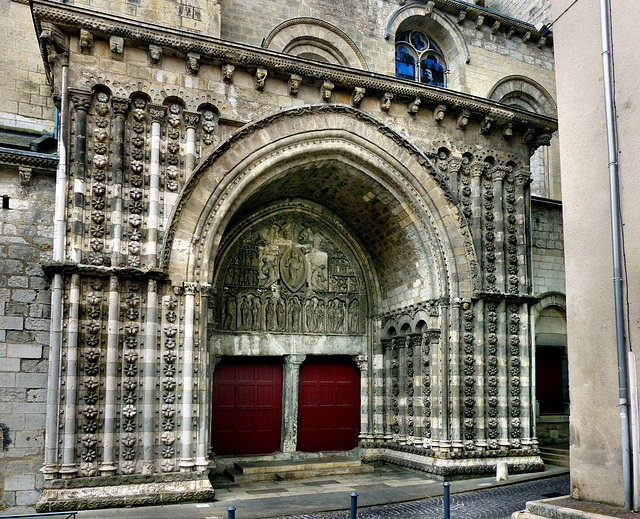Cahors - Cathédrale Saint-Étienne
Cahors - Cathédrale Saint-Étienne
Cahors - Cathédrale Saint-Étienne
Cahors - Cathédrale Saint-Étienne
Cahors - Cathédrale Saint-Étienne
Cahors - Cathédrale Saint-Étienne
Cahors - Cathédrale Saint-Étienne
Cahors - Cathédrale Saint-Étienne
Cahors - Cathédrale Saint-Étienne
Cahors - Cathédrale Saint-Étienne
Location
Lat, Lng:
Lat, Lng:
You can copy the above to your favourite mapping app.
Address: unknown
Lat, Lng:
You can copy the above to your favourite mapping app.
Address: unknown
See also...
Keywords
Authorizations, license
-
Visible by: Everyone -
All rights reserved
-
615 visits
Cahors - Cathédrale Saint-Étienne


The Cahors Cathedral was erected between 1080 and 1135. It got consecrated by Pope Calixtus II in 1119. The same pope, who two years later could imprison his rival "Antipope" Gregory VIII. Four years later, Calixtus ended the Investiture Controversy by agreeing with Emperor Henry V on the Concordat of Worms.
During the times of medieval pilgrimage this cathedral was an important place on the "Via Podiensis", as the "Sainte Coiffe" could be venerated here. This "Holy Headdress" was believed to have been used during Jesus' burial. It had been given to Aymatus, Bishop of Cahors, by Charlemagne. A relic similar to the "Shroud of Turin".
On the northern side of the cathedral, this intricate Romanesque portal faces the "Via Podiensis". This was what the pilgrims saw first - and this portal they used entering the basilica.
During the times of medieval pilgrimage this cathedral was an important place on the "Via Podiensis", as the "Sainte Coiffe" could be venerated here. This "Holy Headdress" was believed to have been used during Jesus' burial. It had been given to Aymatus, Bishop of Cahors, by Charlemagne. A relic similar to the "Shroud of Turin".
On the northern side of the cathedral, this intricate Romanesque portal faces the "Via Podiensis". This was what the pilgrims saw first - and this portal they used entering the basilica.
(deleted account) has particularly liked this photo
- Keyboard shortcuts:
Jump to top
RSS feed- Latest comments - Subscribe to the comment feeds of this photo
- ipernity © 2007-2024
- Help & Contact
|
Club news
|
About ipernity
|
History |
ipernity Club & Prices |
Guide of good conduct
Donate | Group guidelines | Privacy policy | Terms of use | Statutes | In memoria -
Facebook
Twitter

Sign-in to write a comment.